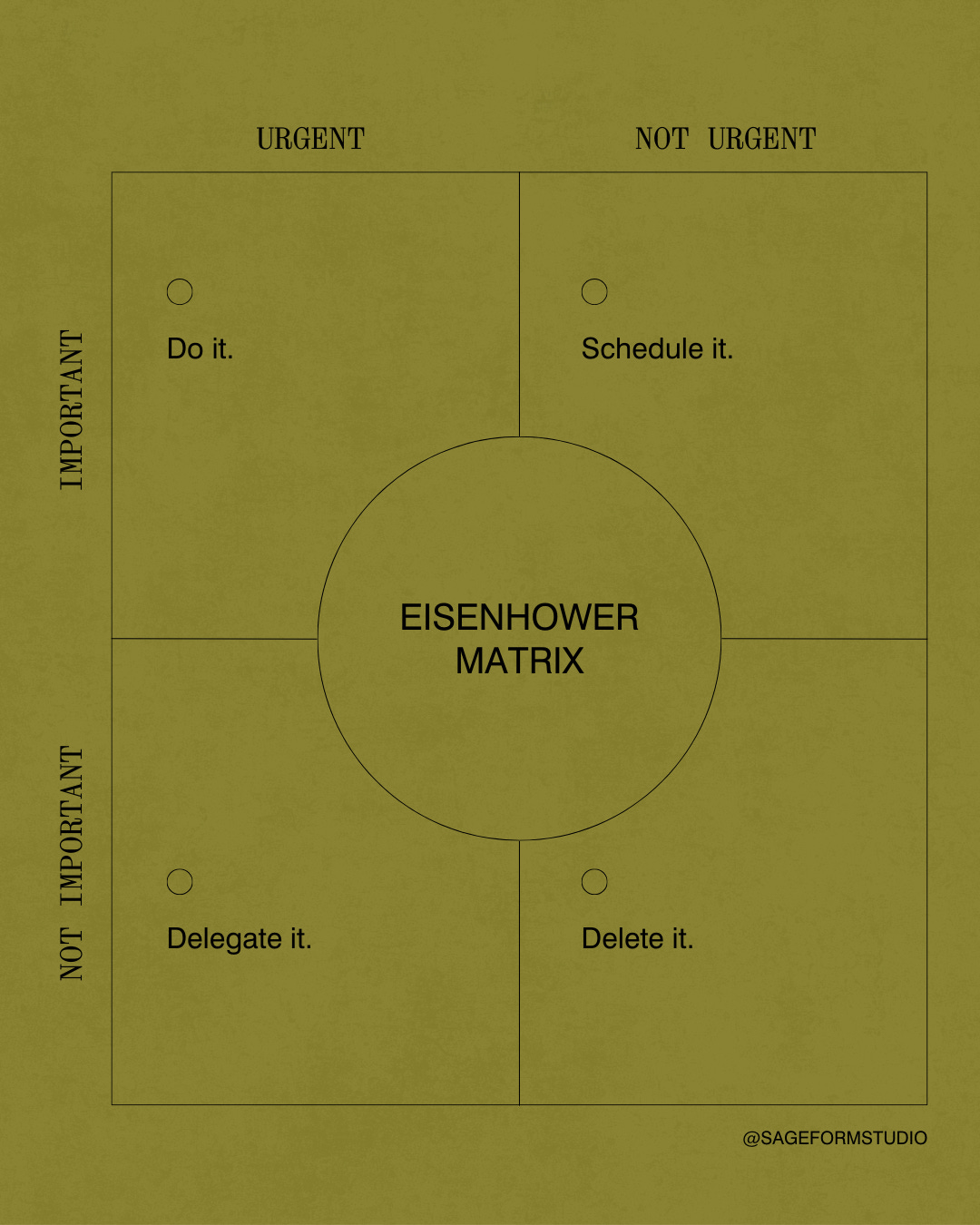Studio notes 1.1
On optimal group size for collective flow, fixing versus accepting, the Eisenhower matrix.
Welcome to the first edition of Studio Notes! Each month I’ll share a short collection of reflections, tools, and ideas that have been shaping my work and thinking lately. Think of it as a series of notes from the studio that gives glimpses into what I’m exploring, observing, or designing, offered in the hope they’ll spark something useful in your own experiences of work, leadership, and life.
1. Optimal group size for collective flow
I’ve been reading research on collective flow (or “group flow”) and the conditions that support it. Collective flow is what happens when a group of people enters a shared state of peak focus, creativity, and connection. It’s the team-level version of “flow” (the state Mihaly Csikszentmihalyi studied), where time seems to bend, action and awareness merge, and performance feels effortless.
You can’t force collective flow, but you can design for it. For example, by using the “yes, and” framework in brainstorming, or by creating space for equal participation and deep listening.
In terms of size, the sweet spot seems to be 4–7 people. Small enough to remain responsive, large enough to generate diversity of ideas. Beyond that, coordination costs rise, and flow becomes harder to sustain.
2. Holding space to accept not fix
We are natural problem solvers. The moment something feels uncomfortable, in ourselves or in someone we care about, the mind leaps to find a solution. We offer advice, strategies, and distractions. It feels satisfying, useful, even loving.
But what happens when there is no solution? Or when “fixing” is not what is needed, wanted or sustainable?
This is where the real work begins. To hold space without trying to change or control. To let emotions, ambiguity, or limitations exist, not as problems to be solved but as experiences to sit in. It sounds simple, but it is deeply uncomfortable. We do not like helplessness, we do not like sitting with pain. Yet it is often more liberating to accept reality as it is than to resist it or try to cover it up.
It’s important to note: contrary to what you might assume, acceptance is not passive. It is an active practice. One that requires presence, consciousness, courage, and perserverance. The hardest work we can do is not fixing but holding. To witness without judgment, support without rescuing, accept without resisting.
3. The Eisenhower Matrix
The Eisenhower Matrix is one of those tools that’s been around forever but always feels fresh when you revisit it. Surprisingly, many clients I work with haven’t used it before.
It’s simple but so effective. If it’s:
Important & Urgent → Do it now
Important & Not Urgent → Schedule it (and honour your own scheduling of it!)
Not Important & Urgent → Delegate it
Not Important & Not Urgent → Delete it
Where it gets interesting is noticing how often we’re pulled toward urgency at the expense of importance. That’s where burnout creeps in. Real leadership lies in making space for the “important but not urgent” stuff - the long-term, deep work that too easily gets squeezed out.
That’s it for this month’s Studio Notes. If there’s a topic you’d like me to explore, or a question you’d like answered hit reply or let me know in the comments!





The Eisenhower matrix is so helpful!